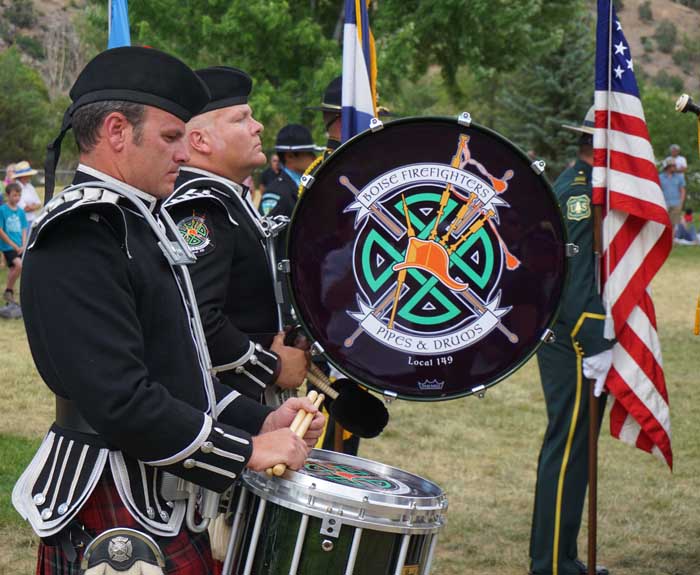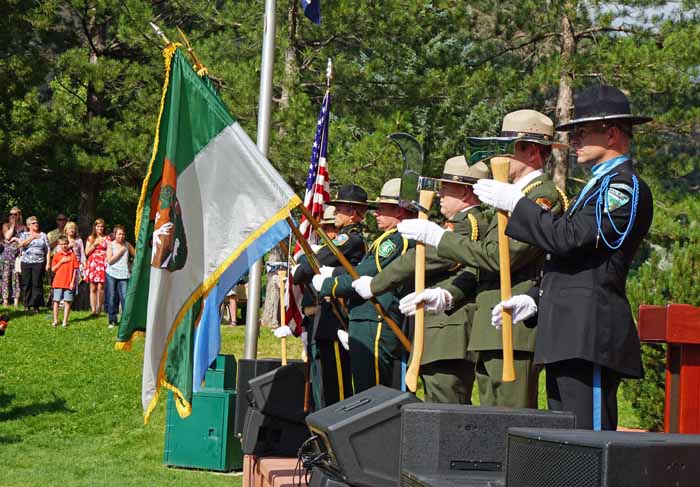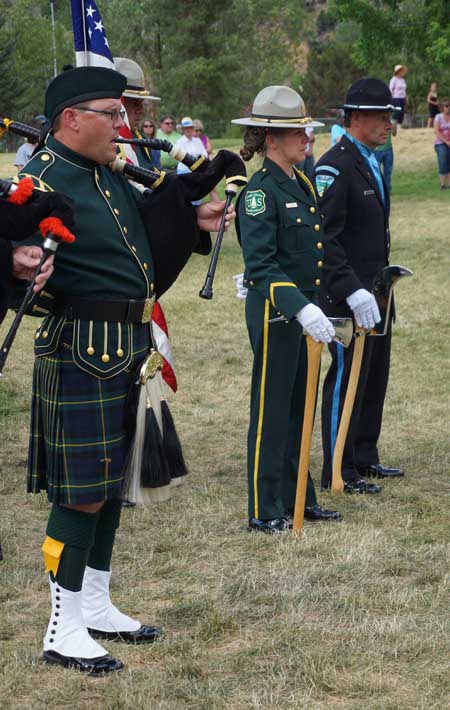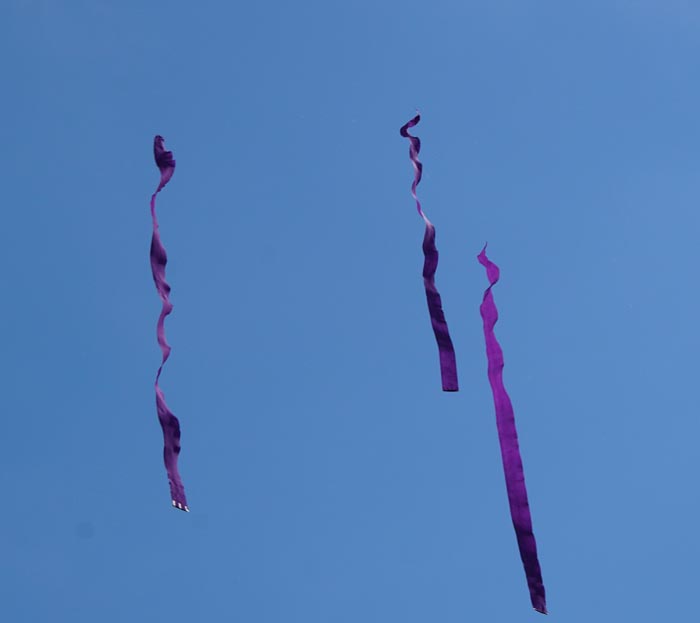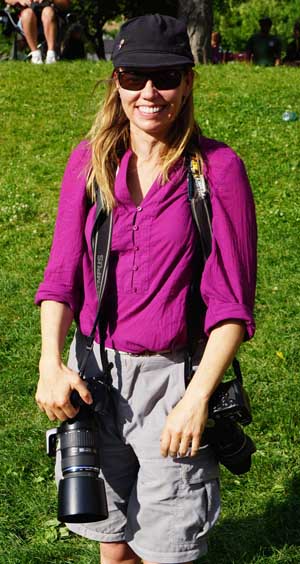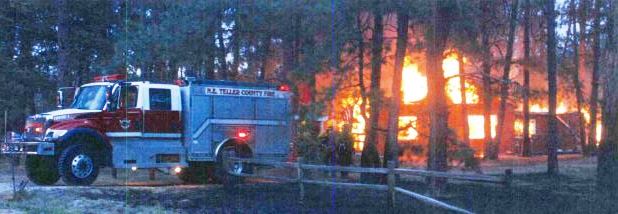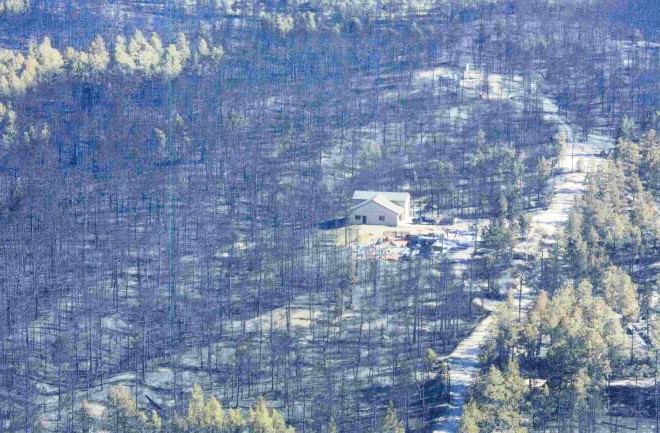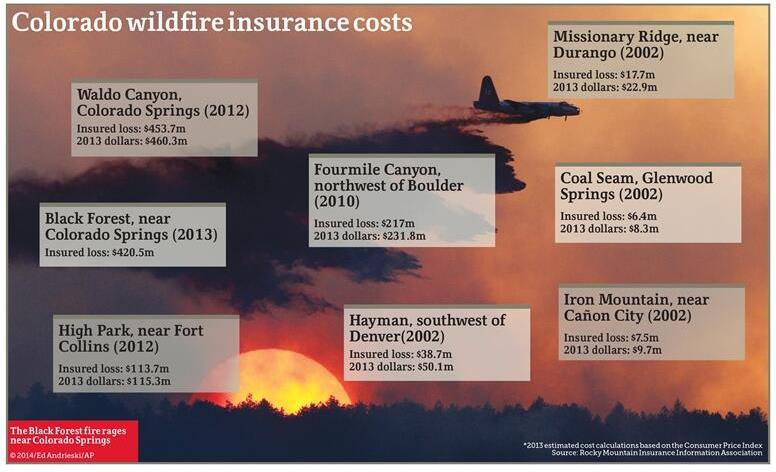On Sunday I attended the event at Glenwood Springs, Colorado that memorialized the 14 firefighters that died on Storm King Mountain while fighting the South Canyon Fire two decades ago.
Marsha Rogers has never been a wildland firefighter but has been friends with several of them off and on over the years. Having been at the commemoration on Sunday she was kind enough to share her impressions from the standpoint of a wildfire outsider who has a passing familiarity of what it is like to be a wildland firefighter.
****
On Sunday, July 6, the 20th Anniversary Commemoration of the South Canyon Fire was held in Glenwood Springs, CO. The event honored the 14 firefighters who lost their lives in that fire, and several speakers who addressed those in attendance reflected on the events of July 6, 1994, and how that fire has changed not only the families of those who made the ultimate sacrifice, but changed firefighting operations.
Fellowship among firefighters was evident throughout the service, from the engine procession, to the presentation of colors, to the crews standing together with heads bowed in a moment of silence, remembering the Storm King 14.
Daniel Jiron, U.S. Forest Service Regional Forester, commented on what we have learned from the South Canyon Fire, saying the event changed what questions should be asked. Jiron said firefighting was not just a job, but a vocation, and said firefighters share “a fellowship no one would understand.”
Ralph Holtby of Prineville, Oregon, father of deceased firefighter Bonnie Holtby, initially turned down the invitation to speak, but he couldn’t sleep that night, so changed his mind. Holtby recalled July 7, 1994, when the USFS came to his door. “Twenty years have gone by,” said Holtby, “but we’re still here. We still remember.”
A smoke jumper in college, Holtby understood firefighting. “Think!” was Holtby’s advice to firefighters, encouraging them to think of the weather, the terrain, and their comrades.
He reflected on the kindness, generosity, and compassion that came from the community after the tragedy. He said people donated funds, and parents of the firefighters who died formed a committee, and wanted to build a monument to memorialize the fallen.

One monument was built at Two Rivers Park in Glenwood Springs, and sits near the base of Storm King Mountain. At the center of the monument is a bronze statue depicting three firefighters, and is surrounded by memorial stones for each of the 14 firefighters who lost their lives on the mountain. A split piece of granite was on display, with a plaque describing that the other half of the piece of granite was in Prineville, Oregon, home to several of the fallen firefighters.
Holtby had walked the trail up the mountain Friday morning with his wife, brother, and three grandkids – the youngest was one year old, and was carried by his 15-year-old brother. Although Holtby expressed that it’s tough to get closure, and that it still hurts, he encouraged others to adapt to what life brings, to keep on going, and try to help others. “God willing,” said Holtby, “we will go on to a better and finer day.”



